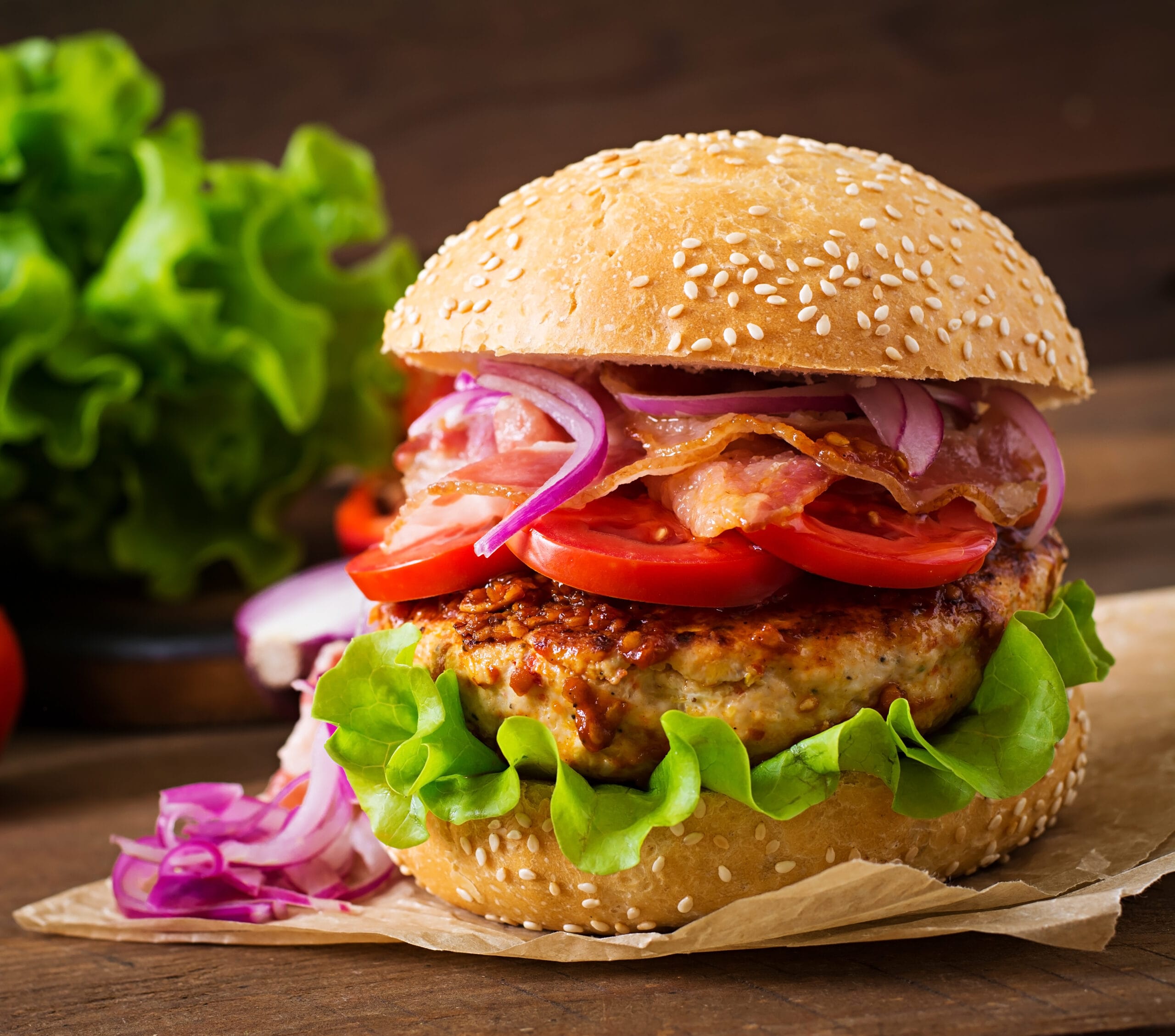The History of the Zinger Burger: When and Where It Was Invented

If you’re a fan of fast food, chances are you’ve indulged in a Zinger Burger at least once. It’s crispy, spicy, and satisfies that hunger in a way only a perfectly fried chicken sandwich can. But have you ever wondered where this delicious burger came from? When was it first created, and which country can proudly claim to be the birthplace of this global favorite? Let’s dive into the spicy and crunchy world of the Zinger Burger and uncover its fascinating origins.
What is a Zinger Burger?
First, let’s break down what exactly makes a Zinger Burger so special. This isn’t your average chicken sandwich. A Zinger Burger typically features a fried chicken fillet that is marinated in a spicy blend of seasonings, giving it that signature kick. It’s usually topped with lettuce, mayo, and sandwiched between a soft bun. The combination of juicy, spicy chicken with cooling lettuce and creamy mayonnaise is what makes the Zinger stand out in the world of fast food.
The Origins of Fast Food
To understand the Zinger, we need to look at the rise of fast food itself. The concept of quick, convenient meals took off in the mid-20th century, with chains like McDonald’s and KFC leading the way. While burgers dominated the fast-food scene, fried chicken wasn’t far behind, especially with the success of Kentucky Fried Chicken (KFC). Over time, KFC evolved from selling simple fried chicken pieces to a wider range of menu items, including sandwiches like the Zinger.
When Was the Zinger Burger First Invented?
The Zinger Burger was invented in 1984, a relatively recent creation compared to other fast food classics. Its birth was part of KFC’s ongoing effort to innovate and stay competitive in the growing fast-food market. The company recognized the increasing popularity of spicy foods and wanted to cater to customers who craved something more flavorful and exciting than the traditional fried chicken sandwich.
Where Was the Zinger Burger Invented?
The Zinger Burger was first introduced in Trinidad and Tobago, a small island nation in the Caribbean. It might surprise many that this fast-food favorite wasn’t created in the U.S. like much of KFC’s menu, but rather in a region known for its love of bold, spicy flavors. The introduction of the Zinger in Trinidad and Tobago made perfect sense given the local palate’s affinity for heat, and from there, it quickly spread to other parts of the world.
Colonel Sanders and KFC’s Impact
While Colonel Sanders, the iconic founder of KFC, had passed away before the Zinger Burger’s invention, his influence was still deeply felt. KFC’s reputation for fried chicken was built on Sanders’ original recipe of 11 herbs and spices, and the Zinger continued that tradition of flavorful innovation. The fast-food giant has always been at the forefront of fried chicken creations, and the Zinger is one of their most successful products.
The Creation of the Zinger: A Spicy Innovation
What set the Zinger apart from other chicken sandwiches was its spice. At a time when most fast-food chains were playing it safe with milder flavors, the Zinger introduced a level of heat that thrilled spicy food lovers. Its crispy coating combined with a spicy marinade gave it an extra punch that other fast-food chicken sandwiches didn’t have. This made the Zinger a bold and exciting option on the KFC menu.
The Zinger Burger’s Global Expansion
After its initial success in Trinidad and Tobago, the Zinger Burger quickly spread to other countries. It made its way across the Caribbean, then into Asia, Europe, and eventually North America. In places like the UK, Australia, and India, the Zinger became a fan favorite. Its spicy profile resonated with diverse cultures, making it a popular menu item in many parts of the world.
Zinger Variations Around the World
As the Zinger expanded globally, local KFC franchises began introducing their own twists. In the Philippines, you might find a Zinger with cheese and a pineapple ring. In India, you’ll often find a vegetarian version of the Zinger made with paneer (a type of Indian cheese) or spiced potato. These regional variations reflect the Zinger’s adaptability and its ability to cater to local tastes while maintaining its core identity.
Why Is the Zinger Burger So Popular?
What makes the Zinger Burger so irresistible? One key reason is the perfect balance of flavors and textures. The crispy, spicy chicken contrasts beautifully with the coolness of the mayo and the softness of the bun. Spicy food is known to trigger a rush of endorphins, making the experience not just about taste but also about the satisfaction that comes from a little heat. Plus, the Zinger’s crunchy texture is undeniably satisfying — there’s nothing quite like that first crispy bite.
The Zinger’s Competitors
While the Zinger was one of the first widely popular spicy chicken sandwiches, it now faces competition from other fast-food giants. Chains like Popeyes and Chick-fil-A have introduced their own versions of spicy chicken sandwiches, each with its unique take on the concept. However, the Zinger’s long history and international popularity give it an edge in many markets.
Cultural Impact of the Zinger Burger
The Zinger Burger has become more than just a fast-food item; it’s a cultural icon. In many countries, it’s a go-to comfort food, and social media is filled with fans sharing their love for the Zinger. From food challenges to viral videos of people tasting it for the first time, the Zinger has cemented its place in fast-food culture.
Nutritional Profile of the Zinger Burger
While delicious, the Zinger Burger is definitely a treat rather than a health food. A single Zinger typically contains around 400-500 calories, depending on the country and preparation method. It’s also high in fat and sodium, which is typical of fried fast food. However, for those who crave indulgence, it’s worth every calorie.
The Future of the Zinger Burger
As the fast-food industry evolves, the Zinger Burger is likely to continue adapting. With growing trends in plant-based alternatives and healthier fast food options, we may see new versions of the Zinger that cater to more health-conscious consumers. Whether it’s a grilled version, a plant-based patty, or new flavor variations, the Zinger is sure to stay relevant in the years to come.
Conclusion
The Zinger Burger’s journey from a small Caribbean island to global fame is a testament to the power of bold flavors and innovative fast food. Its crispy, spicy, and satisfying qualities have won the hearts of millions around the world, making it a true fast-food legend. Whether you’re biting into one in Trinidad, Tokyo, or Toronto, you’re part of a global Zinger community





